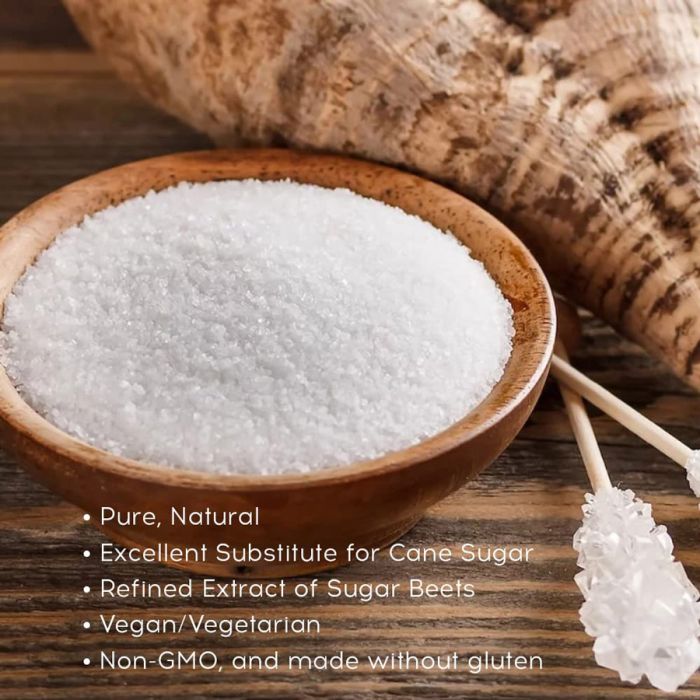The discussion of beet sugar vs cane sugar often includes comparisons of their glycemic index.
Discover the Uses and Perks of Beet Sugar Vs Cane Sugar in Your Daily Diet Regimen
Exploring the distinctive qualities of beet and cane sugar discloses greater than simply their sweetening abilities; it highlights their special influence on wellness and cookeries. Beet sugar, known for its subtle flavor, is commonly favored in fragile treats, whereas cane sugar, with its tip of molasses, adds richness to robust dishes. Each kind holds its very own nutritional profile and glycemic implications, welcoming a deeper understanding of their functions in a balanced diet regimen and sustainable consumption practices.
Origin and Manufacturing Processes of Beet and Cane Sugar

The unique climates and dirt types required for growing sugar beetroots and sugarcane add to distinctions in their cultivation techniques and geographic distribution, affecting the economics and sustainability of their manufacturing. beet sugar vs cane sugar.
Nutritional Comparison In Between Beet Sugar and Cane Sugar
Regardless of stemming from different plants, beet sugar and cane sugar are nutritionally extremely comparable, both largely including sucrose. Each provides concerning 4 calories per gram, converting to roughly 16 calories per teaspoon. Structurally, both sugars are composed of roughly 99.95% sucrose, with minimal amounts of various other materials like moisture and trace element, which do not significantly change their dietary profiles.

Inevitably, when selecting between beet sugar and cane sugar based upon dietary web content alone, both deal the same advantages and disadvantages as they are basically kinds of the very same particle-- sucrose, providing fast energy without various other nutrients.
Influence On Health And Wellness: Glycemic Index and Caloric Material
Discovering further right into the results of beet sugar and cane sugar on health and wellness, it is important to consider their glycemic index and calorie material. The glycemic index (GI) of both beet and cane sugar is around 65, classifying them as high-GI foods, which can trigger quick spikes in blood sugar levels.
Each kind of sugar has about 4 calories per gram, making their calorie content equivalent. For those checking caloric intake, particularly when handling weight or metabolic health conditions, understanding this equivalence is important (beet link sugar vs cane sugar). Extreme intake of any type of high-calorie, high-GI food can contribute to wellness problems such as obesity, heart condition, and insulin resistance.
Environmental and Economic Factors To Consider of Sugar Production
Beyond wellness effects, the manufacturing of beet and cane sugar additionally raises significant environmental and financial issues. Sugar beet farming often tends to need cooler environments and has a lower geographical impact compared to sugar cane, which flourishes in exotic areas. Nonetheless, both plants are intensive in terms of water use and land profession, possibly causing deforestation and water shortage. Financially, the international sugar market is highly volatile, influenced by modifications in worldwide profession plans and aids. Many countries incentivize sugar production through financial backing, skewing market costs and impacting small farmers adversely.
In addition, making use of chemicals and plant foods in both beet and cane sugar growing can cause soil degradation and pollution, more influencing biodiversity and neighborhood water bodies (beet sugar vs cane pop over to this site sugar). The option between cultivating sugar beet or cane frequently depends upon local ecological problems and economic factors, making the sustainability of sugar manufacturing an intricate problem
Culinary Applications and Flavor Distinctions
While the ecological and economic facets of sugar production are indeed substantial, the choice in between beet and cane sugar likewise influences culinary applications and taste profiles. Beet sugar, acquired from the sugar beet plant, is known for its extremely neutral taste.
Walking stick sugar, drawn out from sugarcane, usually retains molasses traces, which pass advice on an unique splendor and deepness. The slight variant in moisture content between beet and cane sugar can affect the structure and consistency of meals, making cane sugar a favored option for certain recipes that profit from its one-of-a-kind residential or commercial properties.

Verdict
In verdict, both beet and cane sugar have unique origins and production processes, supplying comparable dietary profiles with small differences in salt web content and flavor. While their effect on health, specifically pertaining to glycemic index and calories, is equivalent, the option between them frequently comes down to ecological, financial elements, and specific cooking requirements. Understanding these facets can assist consumers in making educated decisions that align with their health objectives and taste choices.